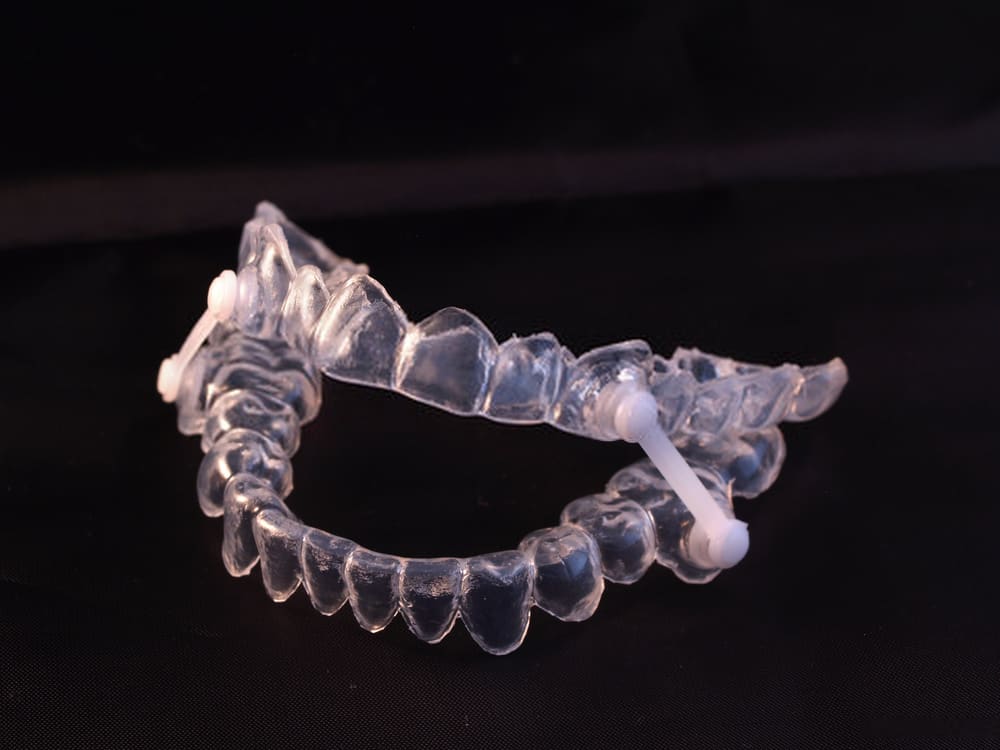Occlusal Splint (Orthotic Device)
Kent Family Dentist

A person can clench or grind their teeth unintentionally when awake or asleep, a condition known as bruxism. One sleep-related movement condition is sleep bruxism. More people who clench or grind their teeth when they sleep are more prone to snore and experience breathing pauses (sleep apnea).
How Does Bruxism Affect Your Teeth?
Bruxism can be frequent and severe enough to cause TMD, migraines, cracked or chipped teeth, and other issues. Knowing the symptoms of bruxism and getting regular dental treatment are crucial since it’s possible to have sleep bruxism without realizing it until difficulties arise. The biting surfaces of your back teeth and the edges of your front teeth gradually shorten and chip as a result of bruxism, which wears the upper and lower teeth against one another. Attrition is the process that leads to sensitivity, fractures, and changes in the way your teeth look.
The process known as “abfraction” can also be triggered by the pressure of the upper and lower teeth. When you grind your teeth, the enamel next to your gums “flakes away” as a result of the pressure and flexing forces applied to your teeth. This results in notches along your gumline that could be shallow or occasionally very deep. Long believed to be the result of excessive teeth cleaning, we now know that bruxism is the primary cause of the majority of these notches. These notches may become extremely sensitive to cold, acids, and sweet, or deterioration may happen if they are not cleansed thoroughly. Additionally, bruxism can result in strain and damage to the jaw joint (TMJ joint) and surrounding muscles. This may result in discomfort, joint locking or clicking, or muscular headaches. Mention bruxism at your next dental appointment if you or a family member is grinding your teeth or exhibiting other bruxism symptoms or indicators.
What Is An Occlusal Splint?
A thin, rigid acrylic guard called an occlusal splint is attached to the upper jaw and covers the biting surfaces of your top teeth. It is intended for use at night. You cannot stop clenching or grinding your teeth using an occlusal splint. However, it does help to guide the jaw into a neutral posture, relieving some of the strain on the jaw joint and thereby shielding your teeth from the damaging effects of bruxism.
What To Expect During Your Occlusal Splint Appointments?
Two quick consultations are necessary since our occlusal splints are manufactured just for you: First appointment: Your dentist will take measurements and impressions of your upper and lower teeth during this session. At your second appointment, your dentist will make sure your new splint fits snugly over your upper teeth and within the confines of your bite.
Is Further Treatment Necessary?
A splint’s function is to deflect the damaging effects of bruxism and give your teeth something else to wear down on. As a result, your splint will deteriorate over time, chip, and possibly even break. Your splint will need to be changed if this happens. Treatment by a physiotherapist may be required in cases of severe bruxism in order to address any muscular pain and to give exercises to strengthen and protect your jaw joint in addition to an occlusal splint to protect your teeth.

